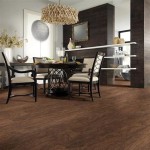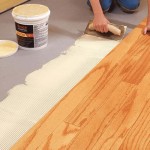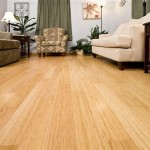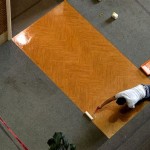Hardwood Flooring Underlayment: The Role of Felt Paper
Hardwood flooring underlayment plays a crucial role in the overall performance, longevity, and comfort of a hardwood floor installation. While often overlooked, the underlayment acts as a critical interface between the subfloor and the finished hardwood surface. One of the oldest and most trusted materials for this purpose is felt paper, a versatile and cost-effective option that continues to be widely used in both residential and commercial projects.
Felt paper, also known as roofing felt or tar paper (though modern versions often use asphalt-saturated paper rather than true tar), has a long history in construction. Its application as a flooring underlayment stems from its inherent properties, which provide several benefits that contribute to a successful hardwood flooring installation. Understanding these benefits and the limitations of felt paper is essential for making informed decisions regarding underlayment options.
This article will delve into the specifics of felt paper as a hardwood flooring underlayment, exploring its composition, benefits, drawbacks, installation procedures, and alternative underlayment options. The goal is to provide a comprehensive overview that enables builders, contractors, and homeowners to assess the suitability of felt paper for their specific hardwood flooring projects.
Key Point 1: Understanding the Benefits of Felt Paper Underlayment
Felt paper offers several advantages that make it a popular choice for hardwood flooring underlayment. These benefits primarily relate to moisture protection, sound reduction, and providing a stable base for the flooring.
Moisture Barrier: One of the primary functions of felt paper is to act as a moisture barrier. Subfloors, especially those made of concrete or wood, can emit moisture that can damage hardwood flooring over time. This moisture can lead to warping, cupping, and other forms of distortion in the wood. Felt paper helps to mitigate this issue by creating a protective layer that slows down the transmission of moisture from the subfloor to the hardwood. While not a completely waterproof barrier, it provides a significant level of protection, especially when used in conjunction with proper subfloor preparation and ventilation.
The effectiveness of felt paper as a moisture barrier depends on its thickness and composition. Heavier grades of felt paper, often indicated by a higher weight designation (e.g., 15 lb or 30 lb felt), generally offer better moisture resistance. The asphalt saturation also plays a crucial role in its ability to repel water. It is important to ensure that the felt paper is properly installed with overlapping seams to prevent moisture from penetrating through the gaps.
Sound Reduction: Felt paper also contributes to sound reduction within a room. While not as effective as specialized soundproofing underlayments, it does provide a degree of cushioning that helps to dampen impact noise and foot traffic sounds. This is particularly beneficial in multi-story buildings where noise transmission between floors can be a concern. The thicker the felt paper, the more effective it will be at reducing sound. The cushioning effect of felt paper also helps to absorb vibrations, further contributing to a quieter environment.
The sound reduction properties of felt paper are a result of its fibrous composition, which absorbs and dissipates sound waves. This effect is amplified when the felt paper is installed correctly, creating a continuous layer between the subfloor and the hardwood flooring.
Leveling Minor Imperfections: Subfloors are rarely perfectly level, and even minor imperfections can cause problems during hardwood flooring installation. These imperfections can lead to uneven flooring, squeaks, and premature wear and tear. Felt paper helps to smooth out these minor imperfections by providing a cushioning layer that conforms to the contours of the subfloor. This creates a more stable and even base for the hardwood flooring, resulting in a more professional and long-lasting installation.
While felt paper can help to address minor imperfections, it is not a substitute for proper subfloor preparation. Significant unevenness or structural issues must be addressed before installing any underlayment. In cases where the subfloor is significantly uneven, a self-leveling compound or other leveling techniques may be required.
Cost-Effectiveness: Compared to many other underlayment options, felt paper is relatively inexpensive. This makes it an attractive choice for budget-conscious projects where cost considerations are a primary factor. The cost-effectiveness of felt paper does not necessarily mean a compromise in quality, as it provides a reliable and effective solution for many hardwood flooring applications. However, it is crucial to consider the specific requirements of the project and weigh the cost savings against the potential limitations of felt paper compared to more specialized underlayments.
Key Point 2: Addressing the Limitations of Felt Paper Underlayment
While felt paper offers several benefits, it is also important to acknowledge its limitations. These limitations relate to its moisture resistance capabilities, sound reduction performance, and overall durability compared to more advanced underlayment options.
Limited Moisture Resistance: While felt paper provides a degree of moisture protection, it is not a completely waterproof barrier. In situations where the subfloor is exposed to significant moisture, such as in basements or areas with high humidity, felt paper may not provide adequate protection. Over time, constant exposure to moisture can degrade the felt paper, reducing its effectiveness and potentially leading to mold or mildew growth. In these situations, a more robust moisture barrier, such as a polyethylene film or a liquid-applied membrane, may be necessary.
Furthermore, the effectiveness of felt paper as a moisture barrier diminishes if it is not properly installed. Overlapping seams are crucial to prevent moisture from penetrating through the gaps. The use of moisture-resistant tape to seal the seams can further enhance the effectiveness of the felt paper as a moisture barrier.
Moderate Sound Reduction: While felt paper contributes to sound reduction, its performance in this area is moderate compared to specialized soundproofing underlayments. If sound reduction is a primary concern, especially in multi-family dwellings or areas where noise levels are high, a dedicated soundproofing underlayment may be a more suitable choice. These underlayments are typically made of materials that are specifically designed to absorb and dampen sound waves, providing a significantly higher level of sound isolation.
The effectiveness of felt paper for sound reduction also depends on the type of hardwood flooring being installed. Thicker and denser hardwood flooring materials tend to absorb more sound than thinner and less dense materials. Therefore, the combination of felt paper underlayment and a thicker hardwood flooring product will generally provide better sound reduction than felt paper underlayment and a thinner hardwood flooring product.
Durability Concerns: Compared to some synthetic underlayment options, felt paper can be less durable and more susceptible to tearing or damage during installation. Care must be taken to avoid puncturing or ripping the felt paper, as this can compromise its effectiveness as a moisture barrier and leveling agent. In areas with heavy foot traffic or where furniture will be moved frequently, a more durable underlayment may be a better choice.
The lifespan of felt paper underlayment can also be affected by environmental factors such as moisture and temperature fluctuations. In areas with extreme temperature variations, the felt paper may be more prone to degradation over time. It is important to consider the specific climate and environmental conditions when selecting an underlayment material.
Key Point 3: Installation and Alternatives to Felt Paper
Proper installation is crucial for maximizing the benefits and minimizing the limitations of felt paper underlayment. Understanding the correct installation procedures and exploring alternative underlayment options are essential for a successful hardwood flooring project.
Installation Procedures: Before installing felt paper, the subfloor must be clean, dry, and free of debris. Any loose nails or screws should be removed, and any significant imperfections should be addressed. The felt paper should be rolled out across the subfloor, ensuring that it is flat and wrinkle-free. Overlapping seams are essential to prevent moisture penetration. A minimum overlap of 2-4 inches is generally recommended. The felt paper can be secured to the subfloor using staples or nails, spaced approximately every 6-12 inches. It is important to avoid over-stapling or over-nailing, as this can damage the felt paper and reduce its effectiveness.
When installing felt paper over a concrete subfloor, it is important to ensure that the concrete is fully cured and dry. A moisture test should be conducted to verify the moisture content of the concrete before installing the underlayment. If the moisture content is too high, a moisture barrier specifically designed for concrete subfloors should be used. The felt paper can be adhered to the concrete using a construction adhesive specifically designed for this purpose.
Alternative Underlayment Options: Several alternative underlayment options are available, each with its own set of advantages and disadvantages. These options include:
* Polyethylene Film: This is a thin, flexible plastic film that provides a highly effective moisture barrier. It is relatively inexpensive and easy to install. However, it offers minimal sound reduction and leveling capabilities. * Foam Underlayment: This type of underlayment provides excellent cushioning and sound reduction. It is available in various thicknesses and densities, allowing for customization based on specific needs. However, it can be more expensive than felt paper and may not be as effective at leveling minor imperfections. * Cork Underlayment: Cork underlayment is a natural and sustainable option that provides excellent sound reduction and insulation. It is also resistant to mold and mildew. However, it can be more expensive than felt paper and may not be suitable for all types of subfloors. * Rubber Underlayment: Rubber underlayment is a durable and resilient option that provides excellent sound reduction and vibration absorption. It is often used in commercial applications where noise levels are high. However, it can be more expensive than felt paper and may require specialized installation techniques.The choice of underlayment should be based on a careful consideration of the specific requirements of the project, including the type of hardwood flooring being installed, the condition of the subfloor, the desired level of moisture protection and sound reduction, and the budget constraints. Consulting with a flooring professional can help to ensure that the appropriate underlayment is selected for the specific application.
In conclusion, felt paper as a hardwood flooring underlayment remains a viable option due to its cost-effectiveness, moisture protection, and ability to smooth out minor subfloor imperfections. However, it is crucial to understand its limitations and consider alternative underlayment options when more robust moisture protection, sound reduction, or durability are required. Proper installation is paramount for maximizing the benefits of felt paper and ensuring a long-lasting and aesthetically pleasing hardwood floor.

Asu 15 Hardwood Flooring Underlayment Felt Paper 36 Wide 432 Sq Ft Schillings

Chicago Hardwood Asu 15 Flooring Underlayment Roll

Tools Accessories Underlayment Underlayments 15 Lb Felt Paper Staple Nail

Grip Rite 15 Felt Paper Hardwood Underlayment 432 Sf Roll East Bay Supply Co

Hardwood Floor Underlayment Ultimate Guide

Quietwalk Laminate And Hardwood Acoustical Vapor Barrier 3 Ft W X 33 34 L Mm T Premium Felt Moisture Resistant Flooring Underlayment 100 Sq Roll In The Department At

Hardwood Floor Underlayment Options From The Forest Llc

Quietwalk Plus Laminate And Hardwood 3 Ft W X 33 34 L Mm T Premium Felt Moisture Resistant Flooring Underlayment 100 Sq Roll In The Department At Com

Roberts Super Felt Underlayment 1 8 Thick 44 X 27 4 Roll 100 Sqft Floorbox
Why Put Paper Under Wood Floors Jlc
Related Posts








